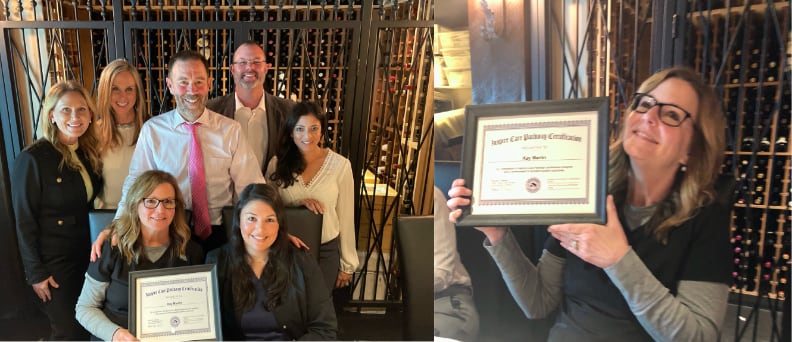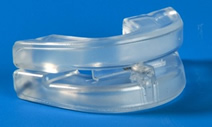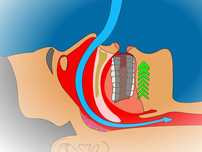Facebook
Youtube Channel
Alpharetta, GA
Phone: 404-446-2400
Fax: 404-446-2409
As a Board Certified Sleep Medicine specialist, Dr. Yanta is one of a limited number of ear, nose, and throat physicians who is also Board Certified in Sleep Medicine. Ear, Nose, and Throat physicians are uniquely qualified to comprehensively evaluate the airway in order to more accurately pinpoint the sources of obstruction which can cause snoring and sleep apnea. Dr. Yanta has relationships with several accredited sleep labs for overnight sleep studies and access to equipment for "Home Sleep Studies". As a surgeon, he has the training to be able to offer options for snoring and sleep apnea in those patients who would benefit from site-specific, targeted surgeries aimed at reducing or eliminating snoring and sleep apnea. Our audiologists can even help our sleep disorder patients, offering standard ear plugs or custom ear molds for the bed partners of those patients who decide upon no treatment at all.
Do you or a family member or loved one snore, or even stop breathing during sleep? If so, you are not alone, and there are multiple ways to reduce or completely cure these conditions. Large studies have shown that up to 50% of people snore on most or every night. A smaller percentage of people, both children and adults, have Sleep Apnea. This is a serious condition in which the airway partially or fully closes and the patient’s oxygen level drops, often to very dangerous levels. Patients with untreated sleep apnea have been shown to have higher chances of fatal car accidents, high blood pressure, strokes, heart attacks, and heart and lung disease. They may also have difficulty concentrating and display irritability and poor work performance among other issues. Children with untreated sleep apnea have lower IQ scores, poorer school performance, and often show hyperactivity when compared to children without sleep apnea.
In children, snoring and sleep apnea are usually caused by nasal congestion and/or enlargement of the tonsils and adenoids. A parent or sibling watching a child having apnea will often see that the child sleeps with his or her head “cocked back” or extended. Often, it is possible to hear snoring which gets increasingly loud and is followed by a pause in breathing and then a “gasp” or “snort”. This represents a rescue mechanism by the child’s brain which is actually starving for oxygen, and the constant interruptions in sleep may have profound impacts on the child’s mood and performance during the following day.
For children who snore, treating the nose with nasal steroid sprays or other medications can often relieve the sound of snoring with no further treatment needed. In otherwise healthy, non-obese children, removal of the tonsils and adenoids results in a very high cure rate for sleep apnea. In healthy children who are at least 3 years of age, this is nearly always done as an outpatient, meaning that the child returns home with his or her parents the same day as the surgery.
In adults, both snoring and sleep apnea become more common the older we get. Men have a higher rate of snoring and sleep apnea as compared to women, and elevated Body Mass Index and obesity also increase the likelihood that a patient will suffer from one or both of these conditions. Smoking, back sleeping, usage of alcohol or sedating drugs prior to sleep, untreated acid reflux, and nasal blockage are other conditions or habits which can worsen snoring or cause sleep apnea. While snoring is bothersome to a bed partner, in general it is not harmful to a patient. Snoring may, however, be a sign of the dangerous condition of sleep apnea. Dr. Yanta works with several Sleep Labs in the area to schedule overnight “in-lab” studies, and for other patients, an “in-home” sleep study can be scheduled in certain circumstances.
Snoring is a sound which is generated by movement of the uvula and the soft palate. In children and in adults, treating nasal airway obstruction with medications or surgery will generally help snoring. There are multiple simple maneuvers which may help decrease snoring, including changing the sleep body position or using Breathe-Rite strips on the nose. Finally, our audiologists also offers custom and non-custom ear plugs for the spouses of our patients who wish no treatment of their snoring (NOT recommended for the spouses of patients who have Sleep Apnea!). Smile and the world smiles with you, snore and you sleep alone.
Children with Sleep Apnea, as discussed above, respond very well to removal of tonsils and adenoids. For adults, the use of Nasal CPAP (Continuous Nasal Airway Pressure) is extremely effective in treating Sleep Apnea. Patients who use nasal CPAP are fitted with a mask which attaches to the nose or to the nose and mouth. This is connected by tubing to a very small and quiet machine which keeps the patient’s airways open with gentle air pressure. Dr. Yanta works with several local and national providers of nasal CPAP equipment.
For patients who are unable (or unwilling) to tolerate nasal CPAP, there are several nonsurgical and surgical options available. In general, these are “site-specific”, so choosing a treatment plan involves a thorough examination of the patient’s airway by Dr. Yanta in the office. An Oral Appliance works by bringing the jaw lower and more “forward”, in effect increasing the space behind the tongue while a patient sleeps. This can be an effective way to treat apnea in a patient whose obstruction is primarily tongue-based and who does not suffer from TMJ (Temporomandibular Joint) pain.
Other procedures which Dr. Yanta offers include Uvulopalatopharyngoplasty, tonsillectomy with or without adenoidectomy, Inspire thereapy for sleep apnea, and hyoid bone and tongue based procedures using the AIRLIFT system. As one of very few Ear, Nose, and Throat physicians in Atlanta who is also Board Certified in Sleep Medicine, Dr. Yanta is able to provide very comprehensive care to all of his pediatric and adult patients who suffer from snoring and/or Sleep Apnea.

Dr. Yanta is proud to offer Inspire therapy is a breakthrough implantable treatment option for people with Obstructive Sleep Apnea who are unable to use or get consistent benefit from CPAP. While you are sleeping, Inspire monitors every breath you take. Based on your unique breathing patterns, the system delivers mild stimulation to the hypoglossal nerve, which controls the movement of your tongue and other key airway muscles. By stimulating these muscles, the airway remains open during sleep.
Click here to learn more Inspire Therapy for Sleep Apnea

Inspire Therapy is a treatment option for obstructive sleep apnea (OSA) patients who are unable to use a CPAP and is the only FDA-approved OSA treatment that works inside the body to treat the root cause of sleep apnea.
This certification allows Kay and Dr. Yanta to provide post-implant care to patients to help ensure excellent patient outcomes. Congratulations to Kay on this accomplishment!
Contact us to learn more about Inspire Therapy and other sleep solutions.
FDA Approves New Surgical Approach for Neurostimulation Device to Treat OSA
The FDA recently approved an improvement to a surgical procedure for implanting a neurostimulation device to treat obstructive sleep apnea (OSA). The Inspire® Upper Airway Stimulation (IUAS) device is used to treat patients with moderate to severe sleep apnea who were unable to use CPAP. Originally, the implantation procedure required three incisions, but the FDA has now approved a two-incision implant procedure, which reduces procedure time and pain for the patient. Learn More
The AIRLIFT™ Hyoid Suspension is a minimally invasive surgical treatment designed to relieve obstructive sleep apnea, which is caused by an obstructed airway. Dr. Yanta is a specially trained sleep apnea specialist and uses a device to implant a small sling-like suture inside, underneath your chin, similar to a hammock, to support your tongue and keep it from falling backward during sleep keeping your airway open. To further open the airway, the device can also be used to implant a sling-like suture to the hyoid bone, which is the bone at the base of the tongue. This advances the hyoid bone forward to help open the airway behind the tongue.
The AIRLIFT™ Hyoid Suspension procedure takes about 30 minutes and you are under anesthesia, so you shouldn’t feel anything during the procedure. Normally, we will recommend that you stay overnight in the hospital. For the tongue suspension procedure, most people experience approximately 5 to 7 days of difficulty swallowing and/or talking after the procedure, along with mild to moderate pain, usually associated with the small neck incision. For the hyoid suspension, most people experience only mild to moderate pain associated with the small neck incision if performed alone. Most patients resume normal activities within two weeks.

Snoring and Sleep Apnea are created by changes in the airway that typically develop over time that restrict the natural flow of air while you breath. This is often caused by the airway being reduced in size or obstructed all together by a narrowing of the airway at the base of the tongue. Oral Appliance Therapy has been recognized as a useful option that helps maintaining an open airway by restricting the reward collapse of the tongue during sleep by holding, or advancing the lower jaw, in a more forward position. This option has been recognized by the FDA and most insurers to be a safe and reliable option for many patients suffering from Mild to Moderate OSA.
The SomnoGuard Line of Oral Appliances, including the AP, are custom fitted by the physician in an easy 10-15 minute fitting appointment. The two piece design is comprised of a solid housing which contains a thermodynamic material that is easily molded to the patient's bite by heating the material, thereby softening it, and then cooling the fitted device to retain a precise and reliable hold, typically with excellent retention.
 The SomnoGuard AP and SP Soft are two-part, thermodynamically designed appliances that are readily fitted chairside in your physician's office. The two piece format enables easy custom fitting, is adjustable, and permits lateral movement of the Mandible and mouth breathing during use. It can be refitted if necessary and has the ability to maximally advance the mandible by approximately 1cm.
The SomnoGuard AP and SP Soft are two-part, thermodynamically designed appliances that are readily fitted chairside in your physician's office. The two piece format enables easy custom fitting, is adjustable, and permits lateral movement of the Mandible and mouth breathing during use. It can be refitted if necessary and has the ability to maximally advance the mandible by approximately 1cm.
The SomnoGuard SP is fitted much in the same manner as the AP, but with a uniform surface to each tray, enable easier self-administered impression by Biting directly by the patient . The SP stabilization mechanism is mounted on the side of the appliance, which minimizes the vertical proportions of the device. Titration (adjustment) is accomplished in 2mm increments (up to 10mm). The design does limit lateral mobility, as compared to the AP, and limits the ability to breathe through your mouth when the device is in place. > Click here to to schedule your appointment